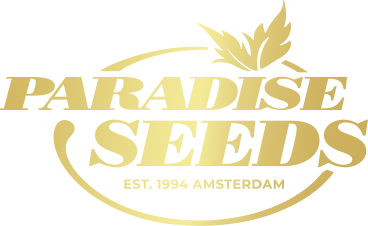Contents
There comes a time in every cannabis grower’s experience when they feel confident enough to take a leap into the unknown. There are many grow techniques out there that can make a difference to your crop, so let’s take a closer look at one of these and look at the method used to mainline cannabis plants.
Talking about mainline cannabis may sound like some kind of intravenous application mechanism where THC gets injected into the body, but in fact it is the term for a very effective method of growing weed! Mainlining is a pruning method which gets rid of all the ‘shrapnel’ of puny side branches and buds and instead focuses the cannabis plant’s energies on a selected number of main bud sites. The result can be very impressive, in the form of a selected number of colas which are also referred to as mainlines ie principle shoots.
Mainlining combines elements of LST (low stress training) and topping and also requires some defoliation. It’s important to take note that mainlining weed plants is an advanced indoor/outdoor growing technique which combines different aspects of pruning and requires some knowledge in handling cannabis plants and a feeling for how they grow. Without such growing knowledge, mainlining can create a high stress experience for weed plants and disappointment for beginners. Outdoor mainlining and indoor mainlining can boost marijuana cultivation yields significantly. Read on for a guide on how to mainline your weed plants.
How to mainline cannabis – start with Two mainlines
The natural grow pattern of a cannabis plant is to grow straight upwards towards the light. Nature’s way is to focus the plant’s efforts into whatever is at the top of the plant. What is mainlining and how does it differ from nature’s way? The mainline cannabis technique promotes sideways growth, which develops from a ‘manifold, or hub, connecting several main branches.
You need a strong weed plant to withstand the stress of pruning. As a rule of thumb, it should have developed 6 – 8 nodes (the point where side shoots extend from the main stem) before conducting any surgery, which usually means about 30 cm in height. To create the manifold the main stem needs to be cut above the third node and everything beneath it needs to be taken off – this is phase of the process is known as defoliation. You will be left with a skinny T shape which is the foundation for expanding your mainline cannabis process.
The cross shoots/baby side branches now need to be trained to grow horizontally. This is achieved by (gently!) using the LST technique of pegging them down to discourage vertical growth, using soft gardening wire and tent pegs or kebab skewers. The plant will look a little bit sorry for itself for a couple of days but nature is a wonderful thing and the plant will start to grow in the direction it has been trained to go in!
Developing the manifold – Increasing cannabis mainlines from two to four
There is a lovely symmetry with mainlining and the idea is to develop 6 – 8 mainlines from your initial manifold. As you develop the mainlines maintain that uniformity in the structure.
So, we have 1 x manifold supporting 2 x mainlines. For the next stage we are going to turn them into 4 mainlines. However, it’s important not to do this process too quickly as the plant needs time to recover. Leave for at least 5 – 7 days timewise, or allow another 3 – 5 nodes to develop.
The initial two will quickly grow horizontally and start developing new growth. As mentioned before, the plant always want to grow to the light, so these 2 tops/mainlines will be curving upwards. So time to make another pruning cut, counting up the same amount of nodes on each side to maintain uniformity. Once the cut has been made, the node below gets stripped away in another round of defoliation. Check out the Paradise Seeds Skunkworks video on creating 4 mainlines for a great visual reference guide.
The final phase to increase cannabis mainlines from four to eight
So now we have 1 x manifold and 4 x mainlines. Just as before, these pruning cuts 3 and 4 will develop and produce more growth. Again, it’s crucial to give them time to recover and develop growth before making the final round of cuts which will turn your 4 mainlines into 8. This final prune or ‘top’ takes place 1 node up from the last cut and it’s vital to keep an equidistance ie the same amount of nodes. Use the visual reference of the next instalment of the Skunkworks series Final Topping For 8 Mainlines.
Outdoor mainlining advantages
What is the advantage of mainlining cannabis as an outdoor growth technique? Well for one thing, it is an excellent way of growing stealth plants. Unlike the bushy presence of a traditional growth cannabis, this horizontal creeper blends into the background so is ideal for a discreet or guerrilla grow.
It is also a great technique to use in wetter/colder climates as less foliage and increased airflow is a good defensive measure against mold. One tip for usage in northern regions outdoor spaces is to allow the plant to grow higher (50cm or so) before creating the manifold to ensure it doesn’t lose the sunshine as the sun slips lower in the sky through autumn.



